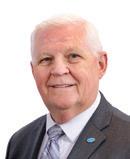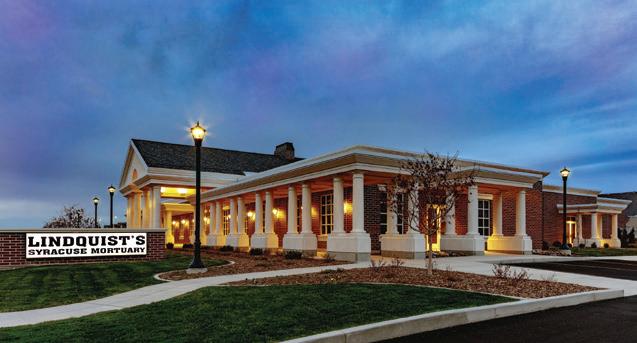

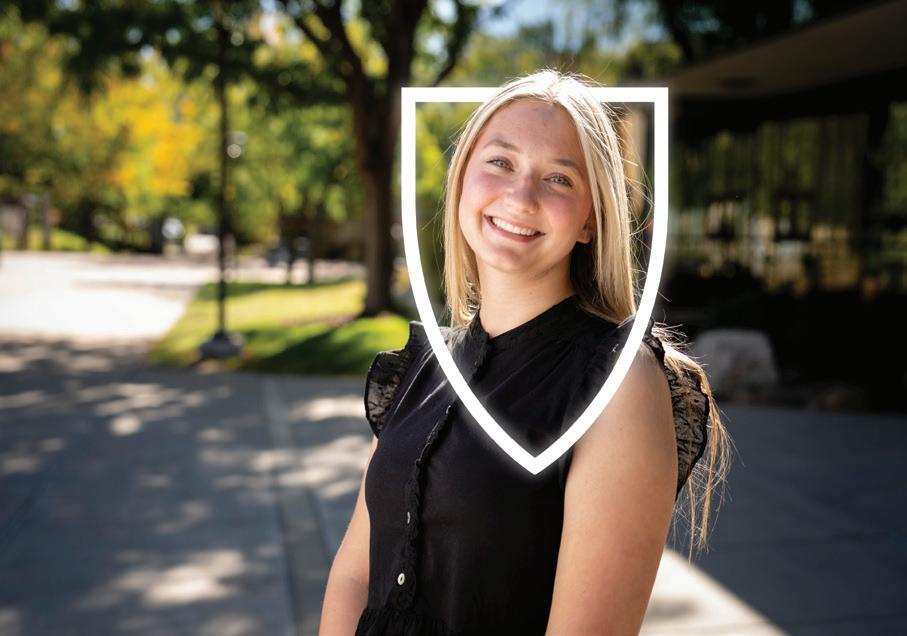
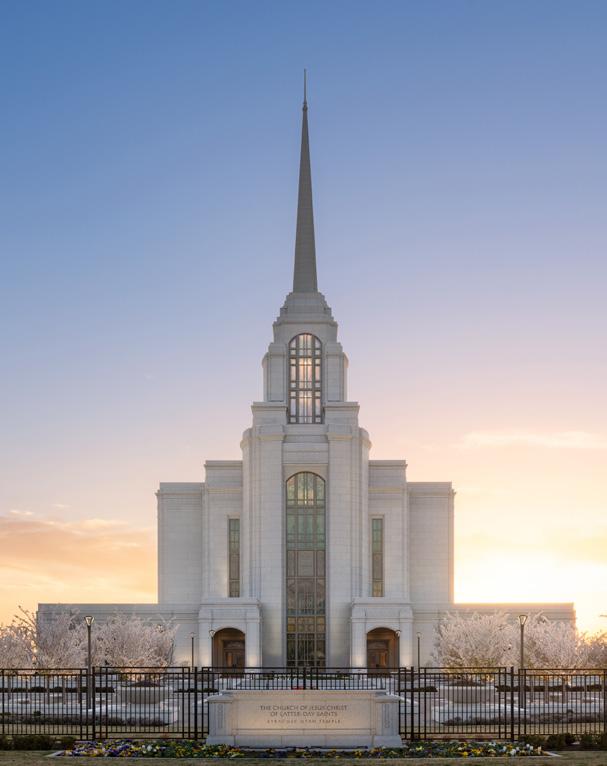





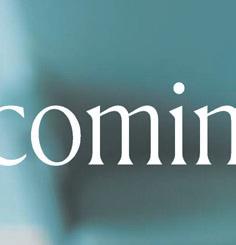



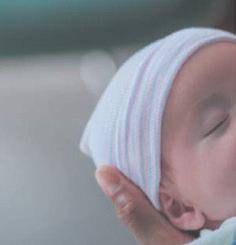
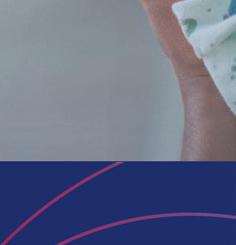



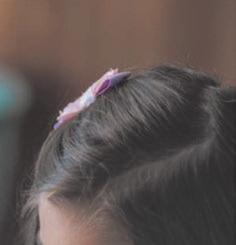
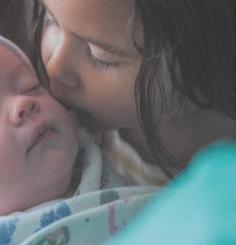
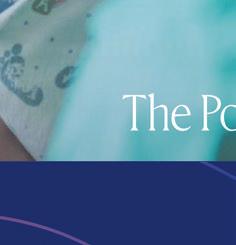
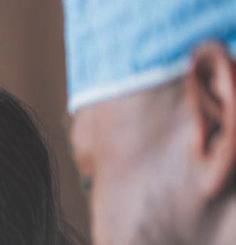
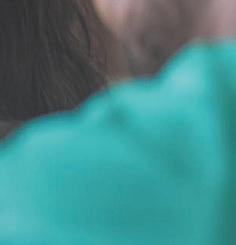
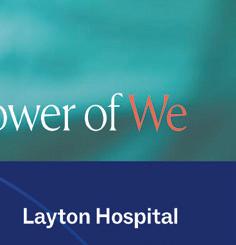





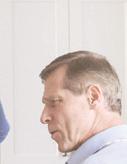



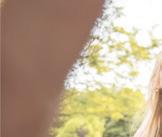

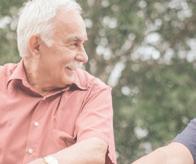







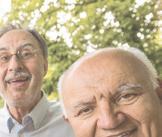









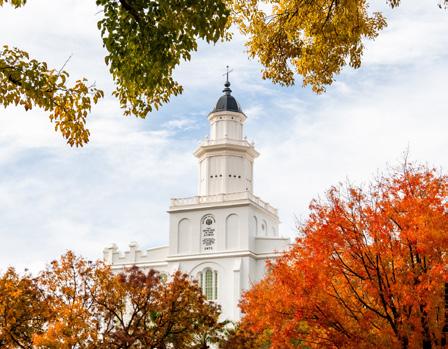




























































A guide to visiting the state’s most beautiful structures.




From St. George to Price, Utah’s Temple Trail will take you on a journey through all of the Church of Jesus Christ of Latter-Day Saints temples located in Utah. Full of stories and unique photos from every temple, current, under construction & announced.












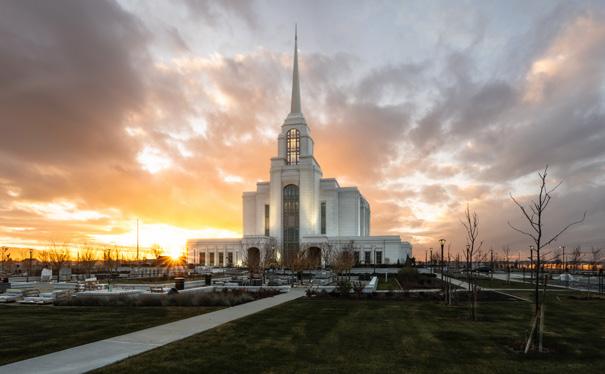























Find your next home at Legacy Park Estates in Syracuse, where thoughtful design meets everyday convenience. Located just off 1000 W and next to the scenic city park, Legacy Park, this community offers easy access to shopping, dining, top-rated schools, Hill Air Force Base, Antelope Drive, and the West Davis Corridor.
Choose from Ivory Homes’ Signature or Collection home plans, starting in the upper $600’s, set on spacious 1/4 to 1/3-acre lots—giving you the room and flexibility to create a home that truly fits your lifestyle.
1 of 8 temples announced on April 5, 2020
OPEN HOUSE: May 10 to May 31, 2025
DEDICATION: Sunday, June 8, 2025 SITE: 12.27 acres 3-story building
Sources: churchofjesuschristtemples.org churchofjesuschrist.org

Syracuse Utah Temple • 1025 S. 2500 West Syracuse, Utah
TOTAL FLOOR AREA: 88,886 square feet 1 single end spire
4 instruction rooms, 4 sealing rooms, 2 baptistries
3rd temple completed in Davis County 24th temple completed in Utah

One year after the opening of Davis County’s second temple of The Church of Jesus Christ of Latter-day Saints, the county’s third temple is set to be dedicated three miles from the shore of the Great Salt Lake.
Announced on April 5, 2020, by Church President Russell M. Nelson, the new three-story Syracuse Utah Temple now rises from the midst of acres of farmland at the intersection of 2500 West and 1025 South in Syracuse.
At nearly 89,000 square feet, the Syracuse temple will be Utah’s 12th largest temple (although the square footage for the new Provo Utah Rock Canyon Temple has not been released).
Despite being a large temple compared to others throughout the world, it will be the smallest temple in Davis County. The Bountiful Utah Temple has a total floor area of 104,000 square feet and the Layton Utah Temple has a total floor area of 93,539 square feet.
For a short time, however, the Syracuse temple will operate with a feature different from any other temple: two baptistries. Only three other temples in the world — the Salt Lake Temple, the Lindon Utah Temple and the Smithfield Utah
Temple — have two baptistries, but the Lindon and Smithfield temples are still under construction and the Salt Lake Temple is undergoing renovation.
The Lindon temple is expected to be completed sometime this year, with Smithfield opening in early to mid-2026 and the Salt Lake Temple opening in 2027.
After watching the progress of this temple’s construction during the past several years, all are now invited to attend an open house for the Syracuse Utah Temple and view its interior. This unique opportunity begins Saturday, May 10, and
continues through Saturday, May 31.
The temple will officially open after dedication ceremonies on June 8. It will then only be open to members of The Church of Jesus Christ of Latter-day Saints. The new Syracuse temple is one of 32 temples either operating, under construction or announced for future construction in the state of Utah.
Reserve some time now to tour the inside of this magnificent structure that will serve as a landmark in Davis County for many years to come.
Source: churchofjesuschristtemples.org

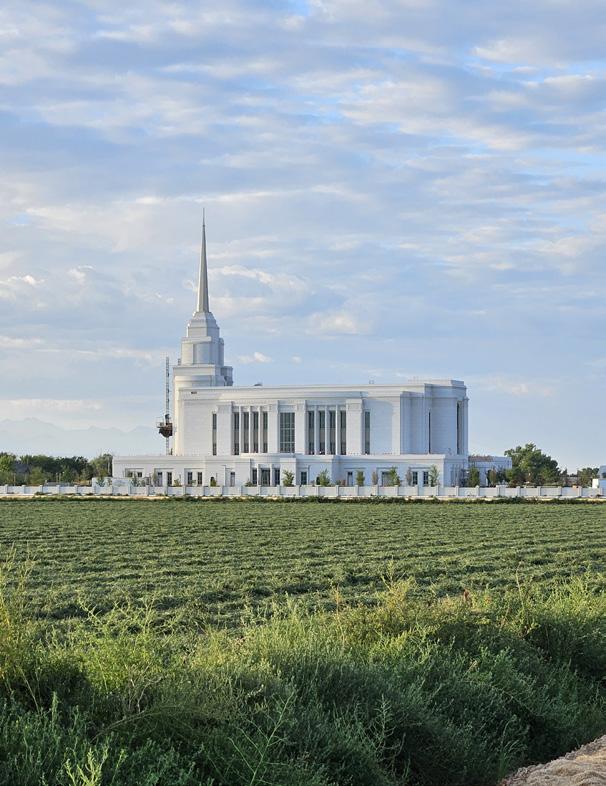
On Saturday, May 10, a unique opportunity begins for the public: the Syracuse Utah Temple will be open to visitors.
Generally only members of The Church of Jesus Christ of Latterday Saints may enter the Church’s temples. When a new or recently remodeled temple opens, however, an open house for the public may be held, during which the public can
tour the interior of the building. That time has come for those who have watched the construction of the Syracuse temple and wondered what it might be like inside.
Following a media day on May 7 and private tour sessions for invited guests on May 8 and 9, the public open house for the temple will begin Saturday, May 10, and continue daily (excluding Sundays) through
Saturday, May 31.
The public is invited to take advantage of this open house opportunity and view the inside of the building and learn more about what happens inside temple doors.
Even after the open house is complete, all are welcome to enjoy the beautiful grounds of the temple.

TO MAKE A RESERVATION TO ATTEND THE SYRACUSE UTAH TEMPLE OPEN HOUSE, SCAN THIS QR CODE.
Photo by Jessica Knighton


Daily beginning Saturday, May 10, and continuing through Saturday, May 31 (excluding Sundays)
Monday through Friday, 9 a.m. to 8 p.m. Saturdays, 8 a.m. to 8 p.m.
Admission is free; reservations are recommended. To make a reservation, visit https:// www.churchofjesuschrist.org/featured/syracuseutah-open-house
The open house will include a walking tour that will last about 45 minutes.
The tour is a guided walking tour. During the tour, representatives of the Church will be available to answer any questions. Dress is “come as you are”; business-casual clothing and comfortable shoes are suggested. All ages are welcome to attend.
The tour is wheelchair accessible. Service animals are not permitted in the temple. Please refrain from smoking or drinking on temple property. Please leave large bags and belongings in your vehicle, and please refrain from taking photos inside the temple. There will be restrooms on-site.
Parking will be available on-site at the temple.
The Syracuse Utah Temple will be dedicated in one session on Sunday, June 8, 2025. The dedicatory session will be broadcast to all units in the temple district.

From churchofjesuschrist.org
Each temple of The Church of Jesus Christ of Latter-day Saints is a house of the Lord, and each is a beautiful building meant to last many years thanks to high-quality materials and rigorous building standards.
The creation of these sacred structures is much like the construction of any other building. The process is also unique because of the significant role temples play in Latter-day Saint theology.
Temples are built using Church funds set aside for that purpose. The Church pays for the costs without a mortgage or other financing.
Church leaders want Latter-day Saints everywhere to have easy access to temples. Temple sites are generally located in areas with enough members (there’s no required number) to warrant construction, or where great distances exist between temples. Public announcements for new temples are usually made by the president of the Church at a general conference.
Once the decision is made to build a temple in a certain area, the First Presidency then prayerfully chooses the precise spot on which to build

— a pattern that has been in place since the Church of Jesus Christ’s beginning. For example, soon after entering the Salt Lake Valley in July 1847, Brigham Young identified the block of land on which to build the Salt Lake Temple.
Bill Williams, who has been a Church architect since 2003, said the Church looks for sites “that would have prominence, be in an attractive neighborhood, a neighborhood that would withstand the test of time.”
After the temple site is selected and the Church determines how large the building will be, a team of architects creates potential exterior and interior designs.
While the purpose of each of the Church’s temples is the same, many aspects of each structure’s inner and outer look and feel are unique and tailored to the local people and area. Williams says good architects “want to create something
unique, something that has its own personality, and [Church leaders] allow us to do that” with temples. He adds that much can be done to make a temple unique, including “the decorative motifs, the kind of furniture, the interior accouterments, how articulate it is.”
To create a look and feel that is just right for a specific temple, architects solicit several sources.
Williams said his team meets with locals to “understand the nature of the people, the country that they live in, Latter-day Saints that are there and how we can better fit the temple” to them.
A critical aspect of the planning process is sustainable design, a concept that Williams said seeks to reduce a temple’s long-term operational cost. “Whatever we can do to make the environmental systems, the mechanical systems energy efficient, to make the interior materials have longevity so that they don’t wear out straightaway, anything
we can do to conserve water, it’s great for us as the owner because it makes that long-term cost less. That’s what it means to be sustainable,” he said.
In selecting building materials, the Church settles for nothing but the best. The pattern for this is found in the Bible’s description of Solomon’s Temple in 1 Kings 7. They used the finest materials and workers. The Church of Jesus Christ follows the same pattern.
The role of inspiration is critical to temple design. Design meetings begin with prayer. The design process can take up to two years. All along the way — from architectural detail clear down to colors and carpet swatches — the First Presidency is involved and provides final approvals.
Because of the high standards for building its temples, the Church sends representatives across the world to search out the best contractors. The Church uses many contractors,
by Steve

and the complexity of temple design requires the very best that most workers have ever had to give on a project.
The high building standards are in place for two main reasons: first, Latter-day Saints believe their temples are the holiest places on earth and tributes to God; second, the Church builds these temples to last hundreds of years.
Church representatives ensure the construction companies are financially stable and able to meet Church regulations (including prohibitions against smoking, drinking and loud music on the construction site, though construction workers do not have to be Latter-day Saints).
The Church then invites those selected companies to the bidding
process. Once a company is chosen, construction typically takes 24 to 48 months, depending on the location.
For temple sites outside the United States, construction can take more time for a variety of reasons. For example, some countries might have more manual labor to do things that in the United States could be done with equipment. Other things can slow down the process, such as additional fees incurred by local governments.
Although it can be a challenge to find qualified contractors, the high bar is worth it for both the Church and the workers. Not only do temple construction projects supply jobs in local communities, they also provide opportunities that many construction workers consider to be the zenith of their careers.
Latter-day Saints who live the highest standards of the faith are permitted to enter a dedicated temple. Therefore, once construction is complete, and prior to the temple’s dedication, the Church opens the temple doors to the public for several weeks for free tours. These open houses are a rare opportunity for anyone in the community to walk through a temple and learn more about Latterday Saint beliefs and what happens inside the Church’s temples. Typically within a week or two after the open house concludes, a Church leader formally dedicates the temple. This is done by offering a dedicatory prayer to consecrate the temple for those sacred purposes for which the temple is built.


Ground was broken for the Syracuse Utah Temple of The Church of Jesus Christ of Latterday Saints on the morning of Saturday, June 12, 2021. Due to COVID-19 pandemic restrictions in place at the time, attendance at the groundbreaking was limited to invited guests only.
Elder Kevin R. Duncan of the Quorum of the Seventy presided at the groundbreaking ceremony. “I am very familiar with these fields where we stand, where we are gathered today. From this temple site, I can see the barn roof of my childhood home,” Elder Duncan said at the event. “Some of you are new to this area, but this is your home too. Whether you are a longtime resident or a ‘new pioneer,’ this temple will be your temple.”
Several members who resided in the temple district shared their testimonies during the groundbreaking ceremony, including Elder Dean M. Davies of the Quorum of the Seventy. He said, “For me, everything about temples reflects love. Love of the Father and the Son, love of living prophets and the love of Church members throughout the world.”
In quoting Church President Russell M. Nelson, Elder Davies said, “I promise you He will bring the miracles He knows you need as you make sacrifices to serve and worship in His temples.” Elder Davies concluded, “This will be a special temple. It will be a light to the community. It will bring peace and joy to those who enter therein.”
In the dedicatory prayer, Elder Duncan offered thanks to the Lord for “the magnificent blessings these holy houses of the Lord bring to us, Thy children. We are humbly grateful for the mercy and redemption extended to us through the loving sacrifice of Thy Son.”
“We recognize the great legacy of faith and sacrifice that has been passed down from the pioneers who settled in this area where a new temple will soon stand,” Elder Duncan said. “We also recognize the faith of the posterity of those pioneers and the many other of Thy other children who have or will yet strengthen this area with their faith and trust in Thee.”
Those residing in the temple district were able to watch a broadcast of the groundbreaking ceremony.




















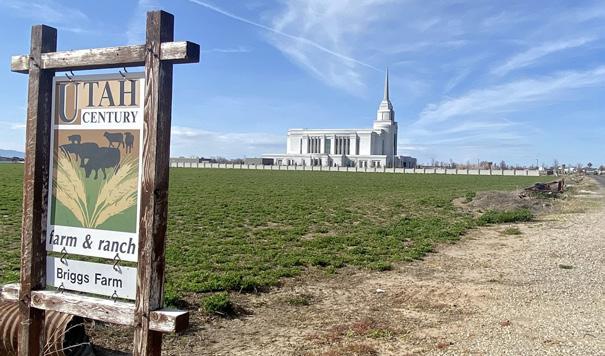
Neal Briggs loves farming. Throughout his life, he’s worked land that’s been passed down through his family since his greatgrandfather purchased it in 1885. He’s told his family many times that nothing would ever convince him to part with any of his land — with one exception.
“I always added the clause, unless
the Lord happens to need it for a temple. I don’t know how many times I’ve said that,” Neal said.
That one exception came to fruition on a Friday in November of 2019 when representatives of The Church of Jesus Christ of Latterday Saints contacted Neal and his wife Caroline Briggs and informed them the Church was interested in
purchasing some of his farm in order to build a temple.
The beautiful Syracuse Utah Temple now sits on 12 acres of land formerly owned by the Briggs family. In fact, the temple is surrounded on three sides by Briggs land that Neal continues to farm.
While he had told his family of his temple exception, Neal said he
never had a premonition or feeling that a temple would actually be built on his land. When he received the call from the Church inquiring about possibly purchasing his land, he told them what he tells all the developers who frequently call with the same question: it wasn’t for sale. A meeting in person was requested; he and his wife agreed and spent the weekend wondering what the Church could possibly want with their land.
“On Monday morning, sitting in my living room, they told me they were interested in our land for a temple. I was speechless for a few seconds, pretty filled with emotion,” Neal said.
He pointed out that there were several other locations in Syracuse where the Church owned land, but it was emphasized that the the Briggs family’s property was preferred. When asked why they specifically wanted his land, their response was that it’s “front and center and a perfect place for a temple.”
Neal said his reaction was, “Well, if they want our land for a temple, so be it.”
Neal and Caroline remained true to their love of farming, however; instead of accepting money for their land, they traded the Church 12 acres of their farm for 12 acres of land the Church owned just across the street from their farm.
Neal said it has been an amazing experience to see the temple grow while he continued working his farmland all around it. “I don’t know how many times I’ve stopped and shed tears of joy thinking, wow, I can’t believe this is happening,” he said.

Neal’s great-grandfather James Henry Wilcox bought the land in Syracuse in 1885 but never farmed it. He was an attorney who lived in Farmington, but at one point in time, Wilcox said, “It’s better to raise good boys than it is to make easy money.” Wilcox then left his law profession and worked his farm in Farmington with his sons.
The love of farming took hold in his two oldest sons, Delbert and William; they later moved to Syracuse, split their father’s property
in half and farmed it. Delbert was Neal’s grandfather, and his half of the property — about 70 acres — was passed down through the family. Although inheritances and repurchases have split and recombined the property over time, Neal currently owns about 50 acres of the original 70 and his sister owns about 20, which Neal leases and farms.
One unexpected result of providing land for the temple has been the outpouring of love and support
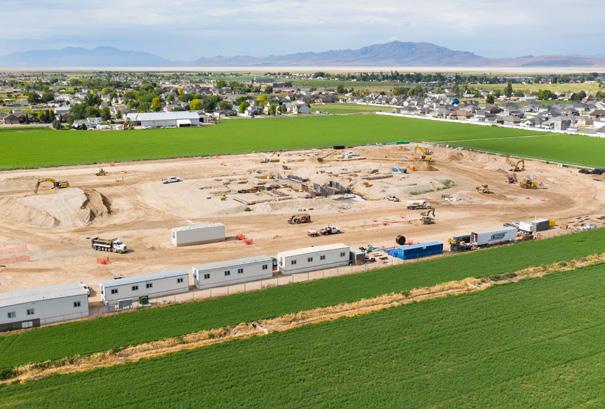
the Briggs family has experienced. People have sent the family kind text messages and emails as well as presented gifts to them. One woman created an oil painting she titled “A View From Above” and presented it to the family. Of special note are the spiritual experiences people have shared about the temple.
“I’ve always thought we’re surrounded by wonderful people,” Neal said. “They tell me, ‘Thank you for making a temple possible here, thanks for providing a temple.’
“I just put it right back to them and say, ‘The reason we have a temple is because the people in this area were ready for a temple. Thank you for bringing a temple to Syracuse. It’s because of you.’”


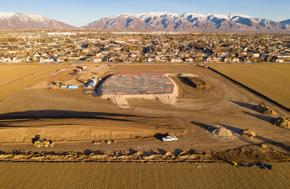
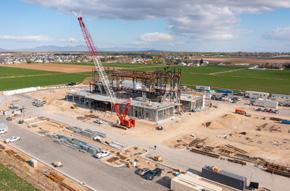






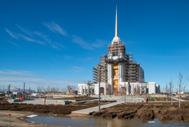

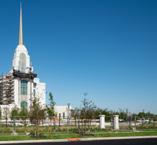

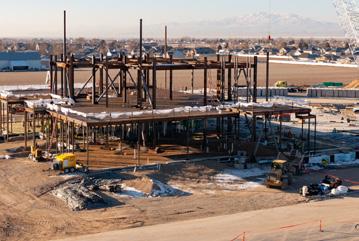



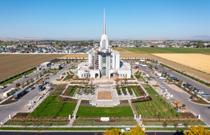

It’s not every day that a temple gets built within walking distance of home.
However, when this unique situation became reality for Young Women leaders in the Lakeview Farms Ward, located just west of the new Syracuse Utah Temple, they saw it as an opportunity.
“One day, I was like, we need to do something. They have such a unique opportunity here to see a temple go from the ground up,” said Sarah Jarman, who was serving as a Young Women adviser in the Lakeview Farms Ward when construction of the temple was beginning to go forward. The ward is part of the Syracuse West Stake of The Church of Jesus Christ of Latter-day Saints.
Jarman and Kristyn McQuarrie, another adviser in the ward’s Young Women, went to their Young Women presidency with the idea of taking photos of the girls in their organization in front of the temple construction site throughout the building process.
The idea was embraced by leaders and girls alike, and the process was begun. “The first date was Oct. 6, 2021. We decided that we were going

October 6, 2021
to do a little fireside to start,” Jarman said. The leaders talked to the girls about the importance of the temple, and the first photo was taken.
Now, more than three years later, the Lakeview Farms Ward Young Women have a series of photos
showing how the temple — and themselves — have grown.
“We felt like it was really important that they use — as the foundation of the temple was being built — that they use this time to build their own foundation,” Jarman said.
The girls and their leaders have gone to the temple site on the first Sunday of every month after church for a group photo since temple construction began. The photos were then posted on their private Instagram account and on a board inside their church building.
“It’s just been a special thing to go every month and take pictures with the girls. They’re excited about going and serving (in the temple),” said April Mathis, who is currently serving as president of the Lakeview Farms Ward’s Young Women organization. “It’s really fun to look back at the pictures, too. The girls have grown up so much in that time, too.”
Mathis was called to serve in the Young Women after the photo project had begun. She knew about it, however, as her daughter Anna was in Young Women, and Mathis was excited to see it continue.
“It’s been really fun for us to watch the whole process and to be able to like have it be so close to our home. I just consider it such a blessing and I want the girls to feel that too,” Mathis said. “There are so many places in the world where people have to travel so long just to get to a temple, and to have one right in our backyard is such a blessing.”
“We thought that it would be fun

November 7, 2021
to have something to do as a group and also, with the temple being right here within walking distance, it would be cool to see the progress as it slowly is built,” said Anna Mathis, who is now 18.
Cara Fox, 15, said she and the other girls would pile into cars right after church on photo days and head to the temple site. Usually, a leader’s spouse or perhaps the ward’s bishop or a bishopric member would take the photo, she said.
“When we would stop and take pictures, people would drive past, and I think multiple times we would have people stop and ask what we were doing,” Fox said. “They were usually like, oh my gosh, that’s so cool.”
Kay Berbert, 12, said being part of the photo project has been “really fun.” She said she can see the tip of the temple’s spire from the upstairs laundry room in her home. “I go up there all the time (to see the temple) … because the temple is so important to us members of the Church, and it’s just right there in our backyard. It’s just so beautiful and important to me,” Berbert said.
Gracie Jarman, 15, the daughter of Sarah Jarman, said the Young Women in her ward have been very excited to go to the temple site on the days they were scheduled to take pictures.

May 1, 2022

October 9, 2022

November 5, 2023
“When they first announced it, it was like, oh, my gosh, it cannot get any closer!” Gracie said of the Syracuse temple. When construction began, the temple site was simply an empty field. “Now it’s just this huge, beautiful temple, and it’s so pretty and amazing,” she said.
Gracie said temples have special meaning to her because she and her sister were adopted and were able to be sealed to their parents for eternity in a temple.
The group of young women will
take their last photo in June, the same month the temple is dedicated.
April Mathis said the Young Women leaders then plan to put together photo albums containing the series of photos as a keepsake for the girls.
“I want them to realize what a blessing it is to have a temple close by their homes and I want them to see themselves in the temple,” April Mathis said. “I want them to have that goal of being there and having the temple be a special place for them and their family, too.”
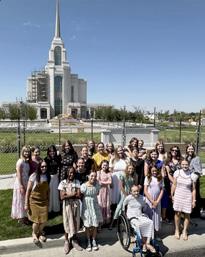
September 1, 2024
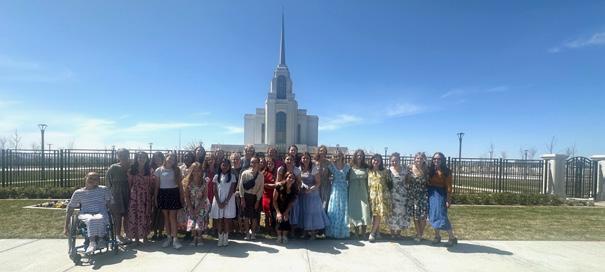































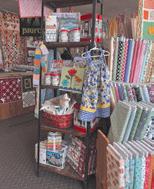


Syracuse’s first residents were drawn to the area by one major resource: land.
“We were primarily an agricultural town,” said Neldon Hamblin, curator of the Syracuse Regional Museum. “We were kind of like the fruit basket of Davis County.”
The history of Syracuse is unique among Utah’s pioneer towns as settlers didn’t arrive with the intent of building a distinct new community; they arrived one by one, family by family, through simple westward expansion and the desire for open land. Towns such as Layton and Farmington had already sprung up closer to the Wasatch Mountains in the late 1800s, and some people began looking for opportunities to build a life in more open areas.
“It was more of in the pioneer spirit; they wanted to explore and expand,” Hamblin said.
As a result, there isn’t one family that is considered the “founding family” of Syracuse, he said, although credit is given to a young man named David Cook for being the first to farm in the area. Cook lived with his parents in South Weber at the time and farmed in Syracuse a few days a week. Cook stated he plowed
his first furrow in Syracuse in 1876; as a result, 1876 is considered the beginning of the community.
In the spring of 1877, Joseph Bodily, his wife Isabella Phillips Bodily and their child Lucy May moved into a one-room log cabin in Syracuse. Located on an 80-acre homestead, the cabin was built by Joseph and was the first cabin constructed in the area.
In the early days of Syracuse, settlers farmed on the bluff on the eastern side of the area. The land was fertile and water was available there, unlike the western area below the bluff that was closer to the Great Salt Lake. There, the land was salty and fresh water was hard to obtain.
“They were able to farm it above the bluff. Everything above the bluff was farmable,” Hamblin said.
The creation of the Hooper Canal made a great impact on the western area below the bluff as it brought irrigation water from the Weber River to the area, making farming much easier. Completed in 1884, the canal was 17 miles long with another 26 miles of ditches extending to individual farms.
The Homestead Act of 1892 encouraged more settlers to obtain
land in the area and begin cultivating crops.
The Syracuse area’s agricultural industry became impressively productive. Every kind of fruit and crop one could grow in Davis County was grown in Syracuse, Hamblin said, from apples, peaches and plums to tomatoes, pumpkins, wheat, potatoes and onions.
For a long time, sugar beets were Syracuse’s largest cash crop, he said. William Criddle moved to the Syracuse area in April of 1887 and became the first farmer to cultivate sugar beets in the area.
Hamblin said trucks would be filled with harvested sugar beets, and the beets would be transported to local “beet dumps.” There, workers would dump the beets into huge piles on the ground before they were transferred to trains for transport to sugar factories outside the area or piled into trucks and taken to Amalgamated Sugar in Layton.
Syracuse’s other most profitable industry had nothing to do with agriculture. It was salt obtained from the nearby Great Salt Lake. The first salt industry was formed in Syracuse by George Payne in 1880; this business would go on to employ

hundreds of people and produce thousands of tons of salt.
In 1885, William W. Galbraith purchased Payne’s business and adopted the brand name “Syracuse,” a nod to Syracuse, New York, where the world’s purest salt was being produced at the time. This decision led to the name the city of Syracuse has today.
Agricultural activities are no longer make up a major part of Syracuse’s economy, but it seems people are still moving to the area seeking the resource that drew its first residents: land.
The city’s population has shot up in the last three decades. In 1990, Syracuse’s population was 4,800; by 2000, it had risen to 9,800. In 2010, it reached 24,500, and in 2023, it reached 37,000.
“I think it’s that people wanted to move into the country,” Hamblin said about the recent growth. “It’s because they like the rural nature and they like the proximity to Antelope Island and the Great Salt Lake.”
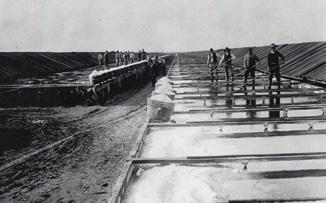

The Syracuse Regional Museum, located at 1891 W. 1700 South, Syracuse, celebrates and preserves the history of the city of Syracuse as well as life along the shore of the Great Salt Lake. The museum offers multiple buildings filled with historical exhibits and artifacts. The museum is open Tuesday through Friday from 10 a.m. to 5 p.m. and on Saturdays from 10 a.m. to 2 p.m.
Admission is free. Guided tours of the museum for groups of 10 or more can be scheduled outside of regular museum hours by calling 801-614-9674.
Historical information & photos courtesy the Syracuse Regional Museum and “The Community of Syracuse: 1820 to 1995, Our Heritage, Centennial Edition” by the Syracuse Historical Commission.

CR Lighting & Electric, Inc, a full-service Electrical Subcontractor, performing all scopes of Electrical Installations & Construction, Service, and Design Build.
Based in Layton Utah, we service primarily the Wasatch Front Geographical area, with clientbased projects taking us all over the United States. We specialize in the Commercial, Institutional, Light Industrial and large multifamily market segments. We pride ourselves on our customer-centric culture and the “small company feel” that we strive to maintain, even as we’ve grown into one of Utah’s larger Electrical Subcontractors.
Beginning in 2002, conservative growth and a commitment to our team has helped us attract some of the best talent in the market. We are proud to say that in our 22 years of business we have never had a seasonal layoff. Our team members value the stability and consistent job security. Combined with a competitive wage and benefits package, we offer one of the best work environments in the industry.
Please read-on for more information.
And when you are ready, reach out to us!
Ben Bartling, Hiring Manager 801-721-0578 • ben@crlighting.net
Trevor Jensen, Operations Manager 801-694-8830 • trevor@crlighting.net
Lighting & Electric, Inc.
our promise is to provide you, our customer, with top quality services and products.
We pride ourselves in being reliable and honest.
We are committed to completing projects on time and within budget.
We seek to exceed expectations and your satisfaction is our Top Priority
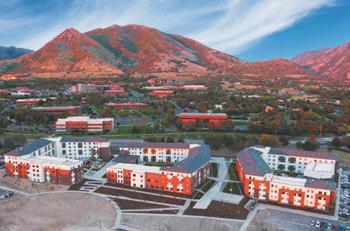
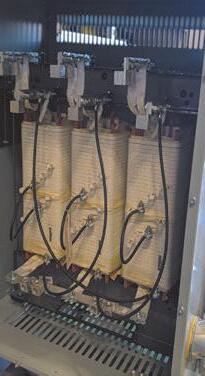
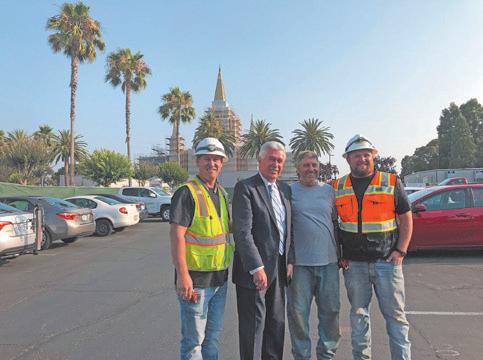

- Commercial Construction
- Institutional, K12 & Higher Education -
- Multi-Family
- Religious (LDS Temple work across the United States)
- Light Industrial
- Design Build Services
- Service & Maintenance Department
• Provo, Utah
• Syracuse, Utah
• Orem, Utah
• Grand Junction, CO
• Farmington, NM
• Manti, UT (Design Assist)
• Nauvoo, IL
• Oakland, CA
• Memphis, TN
• Chicago, IL
• Seattle, WA
• San Diego, CA
• Provo City Center, UT
• Jordan River, UT
• Oquirrh Mtn, UT
• Brigham City, UT
• St Paul MN
• Winter Quarters, ND
• Nashville TN
• Kansas City MO
• Oklahoma City, OK
• Richmond VA
• Featehr River, CA
• Monticello UT
• Ft Lauderdale, FLA


George Payne established the first salt industry in the Syracuse area in 1880. At the time, salt water was placed in special ponds and allowed to evaporate, leaving crystalized salt. The salt was transported with wooden wheelbarrows to wagons and taken to Ogden to be sold.
William W. Galbraith purchased Payne’s business and farm on the lakeshore in 1885. He then constructed 90 acres of salt ponds.
Steam engines utilizing fresh water from nearby wells pumped lake water into the ponds, and Galbraith was soon producing as much as 20,000 tons of salt per year.
Galbraith renamed the business as the Syracuse Salt Works after Syracuse, New York, where the purest salt in the world was being produced. In 1886, Galbraith sold his business to Fred Keisel and Daniel C. Adams, who incorporated the Adams and
The Syracuse Bathing Resort opened on July 4, 1887. The 93-acre resort was built by Daniel C. Adams and Fred Kiesel right where today’s causeway to Antelope Island begins along 1700 South just west of the Syracuse city limits.
Trees were transplanted from Weber Canyon to provide shade at this popular tourist destination.
A dance floor, bowery and seventy bath houses along a pier and the shore were constructed to accommodate visitors and swimmers.
Keisel Salt Works. They produced salt through the 1890s, eventually selling to William B. Clark, who represented the Inland Salt Company, in 1899.
The Gwilliam Brothers Salt Company also operated in the area in the late 1880s; its name was changed to the Crystal Salt Company in 1892. The Inland Salt Company eventually forced them out of business and purchased their company in 1899.

Used by permission, Utah State Historical Society
Other recreational activities at the resort included a horse-drawn merrygo-round, a baseball field and a dirt track for bicycle races.
The popularity of the resort grew quickly and it became a center for picnics, celebrations, concerts and
parties. Unfortunately, the resort only lasted about five years; it was closed due to land title issues and the receding water line of the Great Salt Lake.



The first settlement of Japanese people in Syracuse occurred in 191315. Many worked for the railroad during the winter and farmed during the summer. Several families began their farming career with the John R. Barnes Company Farm. Others worked with local land owners on a share crop basis.
The people came from many areas of Japan seeking the American dream. Many kept their traditional faith, leading to construction of a Buddhist temple in Syracuse.
After the Pearl Harbor attack in 1941, 120,000 Americans of Japanese ancestry were sent to internment camps throughout the country. The Japanese residents of Syracuse were spared, however, due to the actions of Davis County Sheriff Joseph Holbrook, a Syracuse resident, and Claude T. Barnes, who were both against removing the families from the area. Holbrook ensured that the families remained safe and unbothered as they were valued members of Syracuse.
Japanese residents of Syracuse are shown at their church/school building.
R.C. Willey, a furniture company that now serves customers throughout the West with locations in Utah, Idaho, Nevada and California, has its roots in Syracuse.
Rufus Call (RC) Willey began selling appliances door to door out of the back of his red pickup truck (which is currently on display at the Syracuse Regional Museum) in 1932.
He went out of his way to provide great customer service, lending out refrigerators for a week with the promise of taking them back free of charge if the customer didn’t want it (he never had a return).
He also established a financing system for local farmers that extended
their payment schedule through three harvests.
In 1950, he built a cinder block building next to his Syracuse home to accommodate growing demand for his products.
His son-in-law Bill Child began working at the store, and RC kept working until his death in 1954. Bill ran the business after that and brought his younger brother Sheldon into the company. Six stores were added throughout Utah.
In May of 1995, RC Willey Home Furnishings was sold to Berkshire Hathaway in a deal with Warren Buffet.
Source: rcwilley.com
Historical information courtesy the Syracuse Regional Museum and “The Community of Syracuse: 1820 to 1995, Our Heritage, Centennial Edition” by the Syracuse Historical Commission.
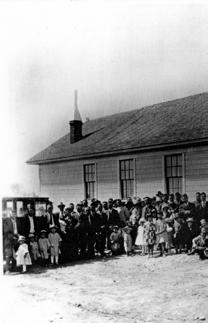
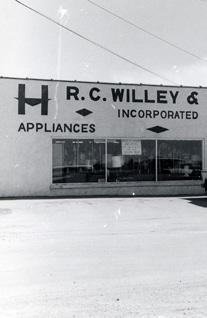
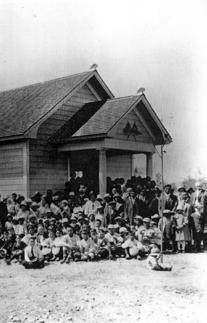











In the 1880s, the western area of Davis and Weber counties was sparsely populated. Houses were few and widely scattered. It was a dry and arid frontier on the bluffs of the Great Salt Lake, making it very difficult to live on and farm.
Edwin Parker was the first bishop of the South Hooper Ward of The Church of Jesus Christ of Latterday Saints, which, at that time, encompassed areas known now as Hooper, Roy, Sunset, Clearfield, Clinton, West Point, Syracuse and West Layton. He served as the area’s presiding elder for 10 years while it was organized as a branch of the Church; he was then called as bishop when the South Hooper Ward was created in 1883. He continued serving as bishop until 1893. In total, he presided over the area for 20 years.
“As a child, I remember hearing stories from my grandfather about his grandfather (Edwin), that he would ride on horseback or with a horse and buggy to visit the members of his ward. He would travel many miles visiting each member and it would take him multiple days,” said Chris Parker, Edwin Parker’s great-great grandson.
Today, there are thousands of
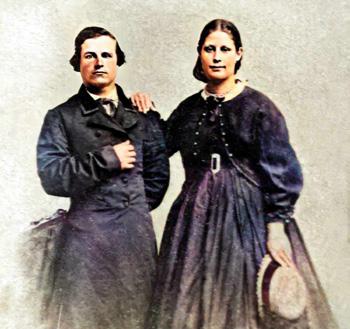
homes, dozens of Church wards and multiple Church stakes within the boundaries of Edwin’s former ward — and now a new temple stands in Syracuse near where Edwin would have traveled on horseback to
minister to his ward members.
“I think he would have never imagined there would be a temple in this area. He’d be blown away to think that all of that barren ground that was just alkaline soil and un-
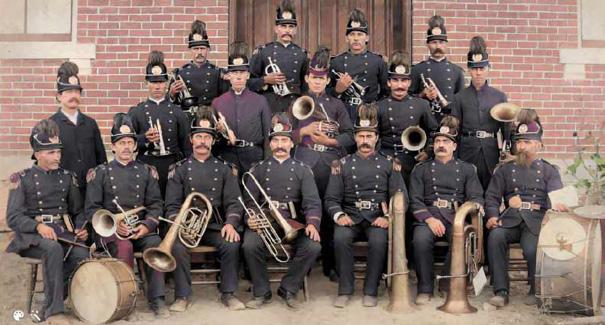
farmable at the time would have a temple on it,” Chris Parker said. “They used to travel over to Salt Lake or to Logan to do any kind of temple work.”
Edwin Parker was born May 1, 1843, in Preston Candover, Hampshire, England, to William and Maria Blake Parker. He was the seventh of 10 children and the fourth son.
Church of Jesus Christ missionaries taught the family, and they joined the Church, with Edwin being baptized on April 15, 1854, just before his 11th birthday. The family wanted to join the Saints in Utah and began saving money for the journey. The children left England one at a time for Utah as the money became available, and Edwin sailed alone from Liverpool to America on April 16, 1861.
He turned 18 during his trip across the Atlantic, landing in New York on May 14, 1861. He traveled west, making it to Omaha, Nebraska, before his money ran low. Down
to his last 10 cents, he found a job digging post holes for the installation of a telegraph line across the plains. He worked his way to Fort Bridger, Wyoming, and then to Salt Lake City, bringing the first telegraph line into the Salt Lake Valley.
Edwin arrived in Salt Lake on Oct. 17, 1861, six months after leaving Liverpool. After arriving, he worked whatever job he could find and began to send money back to his family, until all his family members were able to travel to Utah.
On Feb. 16, 1867, Edwin married Eliza Burningham of Bountiful in the Salt Lake City Endowment House. She died in 1868. That same year he moved to the Hooper area as one of the first pioneers to settle the area. There, he bought 20 acres of land where he farmed and also kept bees.
On Oct. 31, 1870, Edwin married Catherine Cox in the Endowment House. Together, Edwin and Catherine had 13 children. Edwin loved music. He organized

and conducted Hooper’s first ward choir. He played bass drum in the Hooper Brass Band; he also purchased the first organ that came to Hooper, then learned to play it to help provide music at shows and dances.
Edwin lived a life of service and was a devout member of the church

throughout his life. He passed away on October 18, 1935, at the age of 92 and is buried in the Hooper Cemetery.
Chris Parker said his family still owns some of the original 20 acres near the area of 5900 West and 6000 South, Hooper, where Edwin had his original farm. Over the years, the family acquired adjacent land to expand the farm. Chris’ greatgrandparents lived on Edwin’s property, and his grandparents lived across the street.
Chris said he has fond memories of the time he spent at the family farm during his youth. “My whole childhood was spent on this property,” he said. “Some of my best memories growing up were spent working on the farm alongside my grandpa, dad, brother, uncles and cousins. I’d go to my grandparents’ house often, nearly every day in the summer. I grew up just a few miles away…. I’ve worked all this ground, I’ve walked all this ground, I’ve played with my cousins on this ground. It’s part of me; it’s part of my childhood.”
After 157 years of being in the family, the family land is still farmed by Chris’ father Alan Parker and his
uncle Dale Parker. They grow crops such as alfalfa and corn, and Alan raises beef cows. In recent years, Alan has transitioned some of the farmland into growing produce, which he then sells to local restaurants and at local
farmers’ markets.
Chris said his parents plan to serve as temple workers at the Syracuse temple when it opens. “It’s crazy to think that there’s going to be a temple within 5 minutes of my parents in Clinton and within 10 minutes of where Edwin lived. I’m sure Edwin would be very pleased,” Chris said.
Source: “Edwin Parker - Compiled history from a number of sources, by Holly Parker Hansen,” familysearch.org





Dear Fellow Utahn, of compassion, ser vice, and charity to make an impact on Americans across the nation.
I am work ing with my colleagues on the House Ways and Means Committee to craft pro -family and pro - growth policies that provide tax relief for hardwork ing parents and pregnant mothers, enhance technologies in the child welfare cour t system, Dream.
I am grateful for our community and the ways it ser ves as a light to the nation. I t is an honor to ser ve you

Sincerely, Visit blakemoore.house.gov or follow us @RepBlakeMoore for more information.



The completed Syracuse Utah Temple is the fourth Utah temple to be dedicated in the past year and a half that is not topped with an Angel Moroni statue.
This seems to be part of a worldwide shift away from temples of The Church of Jesus Christ of Latter-day Saints having the iconic sculpture as part of their design.
All Utah temples announced before April of 2019, excepting three

pioneer-era temples (St. George, Logan and Manti), are currently topped with Angel Moroni statues. All Utah temples announced during or after April of 2019 have either been completed without the statue or have official architectural renderings showing their final designs lack the statue (there are no renderings available yet for the Spanish Fork, West Jordan or Price temples).
The Orem Utah Temple was the first temple in decades to open its doors without the statue on its spire. (Both the Provo and Ogden temples were dedicated without the statue, but Angel Moroni statues were later added to both of them.) Since the Orem temple’s dedication in January 2024, all new Utah temples have opened without the statue with two exceptions: the Layton Utah Temple and the Red Cliffs Utah Temple.
However, the Layton temple was announced in April of 2018, and the Red Cliffs temple was announced in October 2018, both before April of 2019.
The Provo Utah Rock Canyon Temple (formerly known as the Provo Utah Temple) closed in February 2024 for a multi-year

reconstruction that will completely change the outward appearance of the temple.
While this temple formerly had an angel Moroni statue, the rendering of the new structure shows it lacking the sculpture. Project renderings of the Salt Lake Temple released in April 2019 in connection with that temple’s currently ongoing structural and
seismic renovation show that temple still topped with its angel Moroni statue.
Not all announced temples worldwide have had renderings of their outside appearance released. However, a review of all worldwide temples announced in or after April of 2019 that have had renderings released showed none of them have an Angel Moroni as a part of their plan.


A total of six temples are currently under construction or undergoing renovation in Utah. Another four have been announced and are in the planning phase. These temple sites stretch from Smithfield, located about 11 miles from Utah’s northern border with Idaho, to small communities in Sanpete and Carbon counties in central Utah. When all these temples are completed, Utah with have a total of 32 operating temples within its border.
The Lindon Utah Temple is expected to be completed in mid- to late 2025.
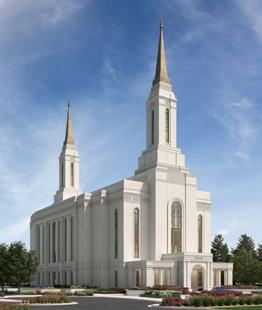
Approximately 850 E. Center, Lindon
Announced: Oct. 4, 2020
Groundbreaking: April 23, 2022
Total floor area: 87,005 square feet
Site: 11.87 acres
Construction estimated to be completed in mid-to late 2025























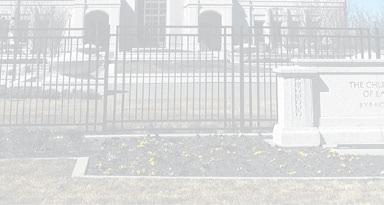



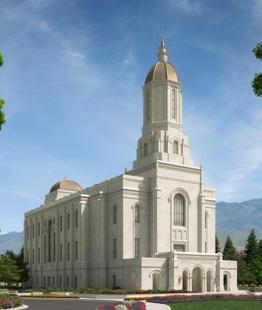

800 W. 100 North, Smithfield
Announced: April 4, 2021
Groundbreaking: June 18, 2022
Total floor area: 81,000 square feet
Site: 13.3 acres
Construction estimated to be completed in early to mid-2026
200 N. 400 East, Ephraim
Announced: May 1, 2021
Groundbreaking: Aug. 27, 2022
Total floor area: 39,000 square feet
Site: 9.16 acres
Construction estimated to be completed in late 2025


1400 E. Center St., Heber City
Announced: Oct. 3, 2021
Groundbreaking: Oct. 8, 2022
Total floor area: 87,626 square feet
Site: 18.17 acres
Full-scale construction pending



2200 Temple Hill Drive, Provo
Original temple closed for reconstruction: Feb. 24, 2024
Square footage and interior details unknown at this time
Renovation estimated to be completed in mid- to late 2027
50 W. North Temple Street, Salt Lake City
Closed for renovation: Dec. 29, 2019
Total floor area: 382,207 square feet
Site: 10 acres
Renovation estimated to be completed in late 2026 with an open house planned for April through October, 2027

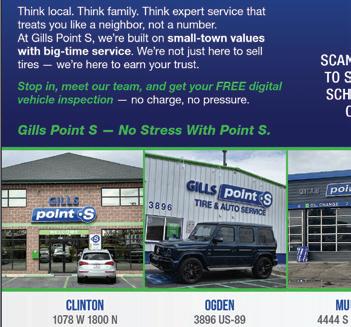




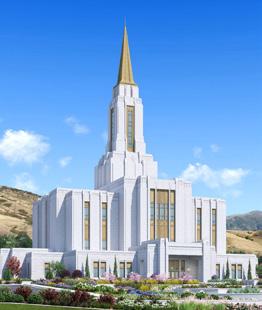
Approximately 7148 South and west of Highway 111, West Jordan
Announced: April 7, 2024
Total floor area: Approximately 85,000 square feet
Site: 16.1 acres
In planning and approval phase, no groundbreaking date set
Northwest of 3950 North & Center Street, Lehi
Announced: April 7, 2024
Total floor area: Approximately 85,000 square feet
Site: 22.48 acres
In planning and approval phase, no groundbreaking date set

Announced: Oct. 6, 2024
In planning and approval phase; exact site location has not yet been announced
Groundbreaking date not yet announced

Announced: April 6, 2025
In planning and approval phase; exact site location has not yet been announced
Groundbreaking date not yet announced


Water & sewage extraction
Structural dry outs & dehumidification
Wind, floods & natural disasters

Mold remediation
Asbestos & lead abatement
Decontamination

Board ups, tarping & temporary solutions
Soot & smoke removal
Structural cleaning & deodorization

Structural repairs
Capital improvement projects

Commercial roofing



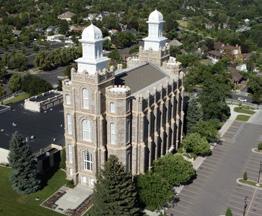

250 E. 400 South, St. George
Total floor area: 143,969 square feet
Site: 6.5 acres
Ordinance rooms: Three instruction rooms with separate veil room, 18 sealing rooms, and one baptistry
Dedicated: April 6-8, 1877, by Daniel H. Wells (with Brigham Young presiding)
1st dedicated temple in operation
1st dedicated temple in Utah
175 N. 300 East, Logan
Total floor area: 119,619 square feet
Site: 9 acres
Ordinance rooms: Four instruction rooms with separate veil room, 11 sealing rooms, one baptistry
Dedicated: May 17-19, 1884, by John Taylor
2nd dedicated temple in operation
2nd dedicated temple in Utah
510 N. 200 East, Manti
Total floor area: 74,792 square feet
Site: 27 acres
Ordinance rooms: Four instruction rooms (four-stage progressive), eight sealing rooms, one baptistry
Dedicated: May 21-23, 1888 by Lorenzo Snow
3rd dedicated temple in operation
3rd dedicated temple in Utah


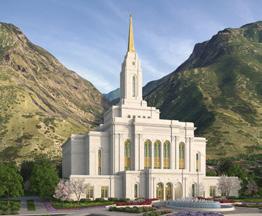
50 W. North Temple, Salt Lake City
Total floor area: 382,207 square feet
Site: 10 acres
Ordinance rooms: Five instruction rooms with separate veil room, 21 sealing rooms, two baptistries
Dedicated: April 6-24, 1893, by Wilford Woodruff
4th dedicated temple in operation
4th dedicated temple in Utah
Currently closed for renovation
350 22nd Street, Ogden
Total floor area: 112,232 square feet
Site: 9.96 acres
Ordinance rooms: Six instruction rooms, nine sealing rooms, one baptistry
Dedicated: Jan. 18-20, 1972 by Joseph Fielding Smith
14th dedicated temple in operation
5th dedicated temple in Utah
(Formerly known as the Provo Utah Temple)
2200 Temple Hill Drive, Provo
Currently closed for reconstruction. Square footage and interior details unknown at this time.
Original dedication of Provo Utah Temple: Feb. 9, 1972, by Joseph Fielding Smith (read by Harold B. Lee)
15th dedicated temple in operation
6th dedicated temple in Utah



10200 S. 1300 West, South Jordan
Total floor area: 148,236 square feet
Site: 15 acres
Ordinance rooms: Six instruction rooms, 16 sealing rooms, one baptistry
Dedicated: Nov. 16–20, 1981, by Marion G. Romney
20th dedicated temple in operation
7th dedicated temple in Utah
Photo by Chad James L. Fournier
640 S. Bountiful Blvd., Bountiful
Total floor area: 104,000 square feet
Site: 9 acres
Ordinance rooms: Four instruction rooms, eight sealing rooms, one baptistry
Dedicated: January 8-14, 1995, by Howard W. Hunter
47th dedicated temple in operation
8th dedicated temple in Utah
Photo by Kylee Israelsen
742 N. 900 East, American Fork
Total floor area: 107,240 square feet
Site: 16.7 acres
Ordinance rooms: Four instruction rooms, eight sealing rooms, one baptistry
Dedicated: Oct. 13-19, 1996 by Gordon B. Hinckley
49th dedicated temple worldwide
9th dedicated temple in Utah

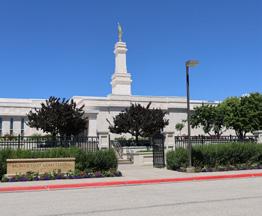

170 S. 400 West, Vernal
Total floor area: 38,771 square feet
Site: 1.6 acres
Ordinance rooms: Two instruction rooms (two-stage progressive), three sealing rooms, one baptistry
Dedicated: Nov. 2-4, 1997 by Gordon B. Hinckley
51st dedicated temple in operation
10th dedicated temple in Utah
365 N. 200 West, Monticello
Total floor area: 11,225 square feet
Site: 1.33 acres
Ordinance rooms: Two instruction rooms (two-stage progressive), two sealing rooms, one baptistry
Dedicated: July 26-27, 1998, by Gordon B. Hinckley
53rd dedicated temple in operation
11th dedicated temple in Utah
14065 Canyon Vista Lane, Draper
Total floor area: 58,300 square feet
Site: 12 acres
Ordinance rooms: Four instruction rooms (two-stage progressive), five sealing rooms, one baptistry
Dedicated: March 20-22, 2009 by Thomas S. Monson
129th dedicated temple in operation
12th dedicated temple in Utah

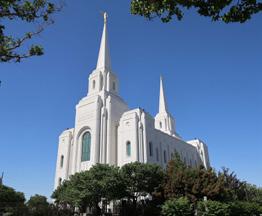
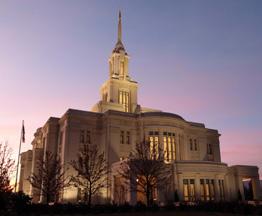
11022 S. 4000 West, South Jordan
Total floor area: 60,000 square feet
Site: 11 acres
Ordinance rooms: Four instruction rooms (two-stage progressive), seven sealing rooms, one baptistry
Dedicated: Aug. 21-23, 2009, by Thomas S. Monson
130th dedicated temple in operation
13th dedicated temple in Utah
250 S. Main, Brigham City
Total floor area: 36,000 square feet
Site: 3.14 acres
Ordinance rooms: Two instruction rooms (two-stage progressive), three sealing rooms, one baptistry
Dedicated: Sept. 23, 2012, by Boyd K. Packer
139th dedicated temple in operation
14th dedicated temple in Utah
1494 S. 930 West, Payson
Total floor area: 96,630 square feet
Site: 10.63 acres
Ordinance rooms: Three instruction rooms, seven sealing rooms, one baptistry
Dedicated: June 7, 2015
146th dedicated temple worldwide
15th dedicated temple in Utah





At Legacy House of Park Lane, you’ll find a vibrant senior living community offering expert assisted living and memory care support. Beyond the intuitive amenities and beautiful nomaintenance apartments, you’ll find an active campus where residents discover friendships, receive support with daily needs, and find opportunities for confidence-inspiring abundant living.
Through our Personal Touch Culture, our associates provide exceptional care and personalized attention to each resident.

Call today to schedule a tour. Visit now and enjoy lunch on us! Schedule a Tour!

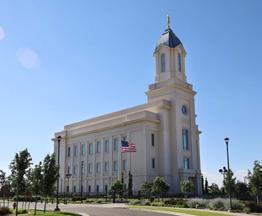
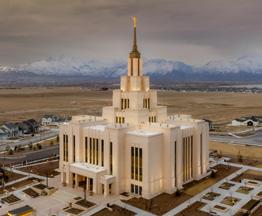
50 S. University Ave., Provo
Total floor area: 85,084 square feet
Site: 5.6 acres
Ordinance rooms: Three instruction rooms (two-stage progressive), five sealing rooms, one baptistry
Dedicated: March 20, 2016
150th dedicated temple worldwide 16th dedicated temple in Utah
280 S. Cove Drive, Cedar City
Total floor area: 42,657 square feet
Site: 9.5 acres
Ordinance rooms: Two instruction rooms, three sealing rooms, one baptistry
Dedicated: Dec. 10, 2017, by Henry B. Eyring
159th dedicated temple in operation 17th dedicated temple in Utah
987 S. Ensign Drive, Saratoga Springs
Total floor area: 87,000 square feet
Site: 22.7 acres
Ordinance rooms: Four instruction rooms, six sealing rooms, one baptistry
Dedication: Aug. 13, 2023, by President Henry B. Eyring
179th dedicated temple in operation
18th dedicated temple in Utah



1471 S. Geneva Road, Orem
Total floor area: 70,000 square feet
Site: 15.39 acres
Ordinance rooms: Four instruction rooms, four sealing rooms, one baptistry
Dedication: Jan. 21, 2024 by Elder D. Todd Christofferson
188th dedicated temple in operation
19th dedicated temple in Utah
Photo by Brent Ririe
1555 South Red Cliffs Temple Lane, St. George
Total floor area: 96,277 square feet
Site: 15.12 acres
Ordinance rooms: Four instruction rooms, six sealing rooms, 1 baptistry
Dedication: March 24, 2024, by President Henry B. Eyring
189th dedicated temple in operation
20th dedicated temple in Utah
2603 W. 4700 South, Taylorsville
Total floor area: 70,460 square feet
Site: 7.5 acres
Ordinance rooms: Four instruction rooms, four sealing rooms, one baptistry
Dedicated: June 2, 2024, by Gerrit W. Gong
192nd dedicated temple worldwide
21st dedicated temple in Utah

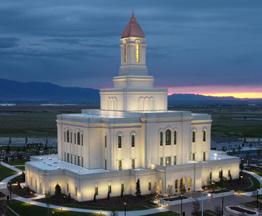
1400 Oak Hills Drive, Layton
Total floor area: 95,539 square feet
Site: 11.8 acres
Ordinance rooms: Four instruction rooms, six sealing rooms, one baptistry
Dedication: June 16, 2024, by David A. Bednar
195th dedicated temple worldwide
22nd dedicated temple in Utah
Photo by Rory Wallwork, ldstemple.pics
2400 N. 400 West, Tooele
Total floor area: 70,000 square feet
Site: 17.98 acres
Ordinance rooms: Four instruction rooms, four sealing rooms, one baptistry
Dedication: Nov. 10, 2024, by Russell M. Nelson
200th dedicated temple worldwide
23rd dedicated temple in Utah
Photo by Jaren Bracken
• Utah’s largest temple: Salt Lake Temple, 382,207 square feet (in fact, it is the largest temple in the world)
• Utah’s smallest temple: Monticello Utah Temple, 11,225 square feet
• Highest Utah temple elevation: Monticello Utah Temple, 7,098 feet above sea level (second is the Cedar City Utah Temple at 5,931 feet above sea level)
• Utah’s first temple: St. George Utah Temple, dedicated April 6-8, 1877
• Utah’s most recently announced temple: Spanish Fork Utah Temple, announced April 6, 2025
• Next temple to be completed in Utah: Most likely the Lindon Utah Temple, but possibly the Ephraim Utah Temple
• Shortest time from groundbreaking to dedication: Monticello Utah temple, 8 months 9 days
• Longest time from groundbreaking to dedication: Salt Lake Temple, 40 years, 1 month and 20 days
• First temple to be dedicated in the State of Utah: Ogden Utah Temple, Jan. 18-20, 1972 (four temples were dedicated previously in the Utah Territory)
• First Utah temple to be created from an existing building: Vernal Utah Temple
• Two Utah temples that received angel Moroni statues after their original dedications: Ogden Utah and Provo Utah temples
• Only Utah temple to feature an angel Moroni statue holding gold plates: Jordan River Utah Temple

• Five Utah temples that do not bear the name of the city where they are located: Jordan River Utah Temple (South Jordan), Mount Timpanogos Utah Temple (American Fork), Oquirrh Mountain Utah Temple (South Jordan), Red Cliffs Utah Temple (St. George) and Deseret Peak Utah Temple (Tooele).
Information from churchofjesuschristtemples.org












For five generations, Lindquist has been serving Utah families with dignity and compassion in their time of need.
The Lindquist story began in 1867 when Swedish immigrant was sent to Logan by Brigham Young and began making furniture and caskets. With a nod to their ancestor, today’s 4th and 5th generation Lindquist family members proudly uphold that legacy of service along with over 100 associates.
Today Lindquist is Utah’s oldest and largest funeral-care provider with eight mortuaries, three cemeteries and two crematories. When you engage us, you’ll find that professionalism and thoughtful care at competitive prices is a commitment made and a commitment kept. It’s why we say without hesitation, “At Lindquist, you’ll get more for less.”

